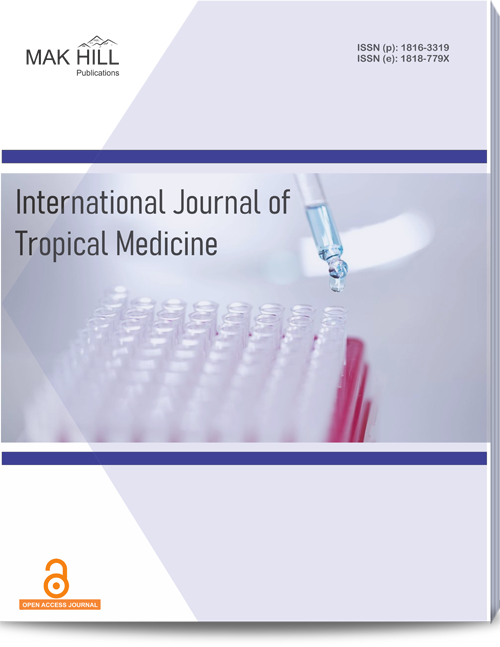
International Journal of Tropical Medicine
ISSN: Online 1818-779XISSN: Print 1816-3319
137
Views
1
Downloads
Impact of Nutritional Status on Fixed-dose Chloroquine and Sulfadoxine/Pyrimethamine Combination Treatment of Malaria in Ugandan Children
C. Obua , M. Ntale , J.W. Ogwal-Okeng , L.L. Gustafsson , U. Hellgren and M.G. Petzold
Page: 53-59 | Received 21 Sep 2022, Published online: 21 Sep 2022
Full Text Reference XML File PDF File
Abstract
The importance of nutritional status on the given dose, drug concentrations and treatment outcome were explored during treatment with fixed-dose chloroquine plus sulfadoxine/pyrimethamine (CQ+SP) in uncomplicated falciparum malaria. A total of 83 children were treated. Younger children (6-24 months) were given half-strength (HS) and older children (2-5 years) full-strength (FS) CQ+SP as recommended. The concentrations of CQ and sulfadoxine (S) were determined by HPLC in 100 µL of capillary blood on filter paper. Multiple logistic regressions were used to determine associations with outcomes. Stunting (height-for-age <-2 Z-scores) was more common (27.7%) compared to underweight (wt-for-age <-2 Z-scores, 19.3%) and wasting (wt-for-ht <-2 Z-scores, 9.6%). Between the dose groups stunting was significantly common among the younger children than the older children (51.6% vs. 13.5%, respectively, p = 0.005), with mean given doses of CQ and S (mg kg 1) lower in the HS than FS dose groups (p<0.001). Day 1 concentrations of S were also higher in the FS compared to the HS dose group. Nearly all children with day 1 S and day 3 CQ concentrations above the population mean cured. Significant explanatory covariates for cure were day 1 S concentration (p = 0.004), day 3 CQ concentration (p = 0.037) and stunting (p = 0.046). During the fixed-dose CQ+SP combination older children got higher than the recommended doses which resulted in higher blood concentrations of CQ and S with significantly better cure rates. Stunting resulted in higher given doses which may have contributed to better cure rates.
How to cite this article:
C. Obua , M. Ntale , J.W. Ogwal-Okeng , L.L. Gustafsson , U. Hellgren and M.G. Petzold . Impact of Nutritional Status on Fixed-dose Chloroquine and Sulfadoxine/Pyrimethamine Combination Treatment of Malaria in Ugandan Children.
DOI: https://doi.org/10.36478/ijtmed.2008.53.59
URL: https://www.makhillpublications.co/view-article/1816-3319/ijtmed.2008.53.59